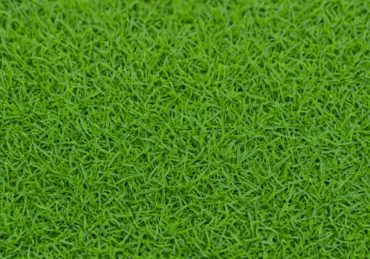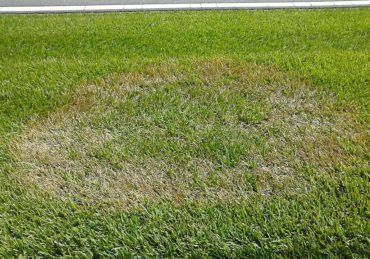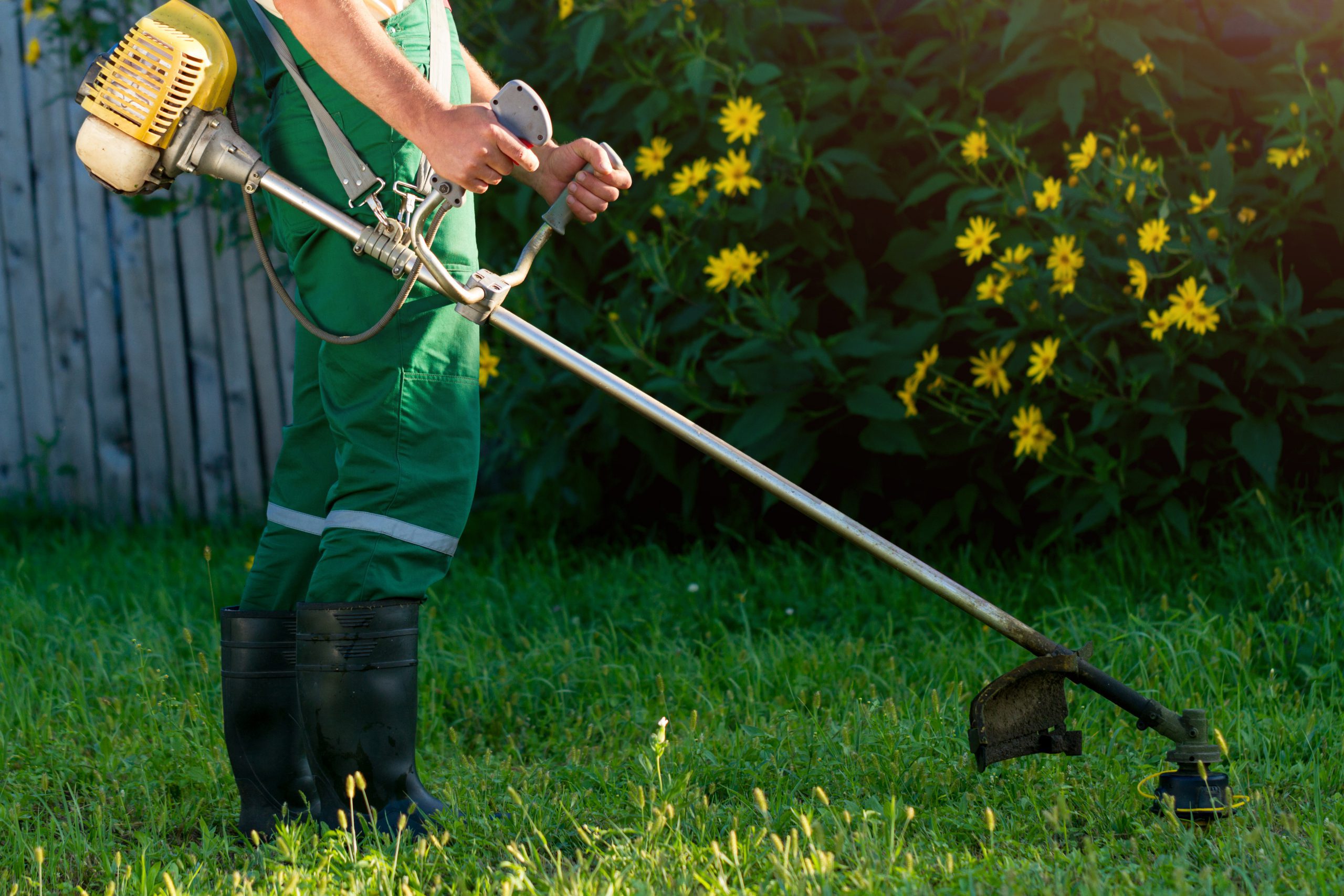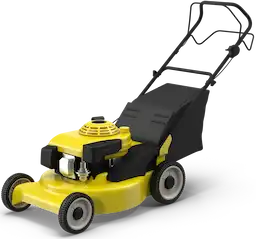A lawn care schedule for cool-season grasses is crucial for a healthy lawn year-round, especially in states with cool season grasses, as it is important to keep the lawn looking its best and consider the specific grass type. In spring, focus on raking, soil amendments, and applying pre-emergent herbicides to prepare for the lawn care season ahead. Fertilize your lawn with nitrogen-rich products in early spring and again in fall to promote the roots of the grass and support the growth of new grass seed, which is key to keeping your yard looking lush. During summer, mow your lawn to maintain a height of 3-4 inches and guarantee deep, infrequent watering to keep your grass healthy. In fall, overseeding and weed control are essential as temperatures drop, making it the best time to prepare for winter. Minimal care is required in winter, but preparation for spring maintenance should begin, including the use of an aeration machine for larger lawns. Understanding these seasonal requirements will enhance your lawn’s vitality and resilience, leading to a thriving landscape as grass is actively growing, especially in a cool season lawn care calendar.
Spring Cool-Season Lawn Care (March, April, May)
As spring approaches, preparing cool-season lawns requires a focused approach to guarantee peak growth, including the use of a lawn mower for effective mowing and applying the right type of fertilizer.
Key tasks such as early spring preparation, appropriate fertilization and overseeding, along with dethatching and aerating, lay the groundwork for a robust lawn that thrives under a cool season lawn care schedule.
Early Spring Preparation
Early spring marks a vital period for homeowners to prepare their cool-season lawns for robust growth and resilience throughout the year, making sure your lawn aligns with the lawn care calendar.
Effective lawn care begins with raking to remove debris and dead grass, allowing for better air circulation to keep your lawn healthy, which is important before you need to mow and go over some basic lawn maintenance practices.
It is also essential to apply soil amendments based on soil test results, addressing any nutrient deficiencies to enhance soil health and provide your lawn for extra nutrients.
During this time, treat lawn moss, as it is most vulnerable in the cool, wet weather.
The application of a fertilizer and a pre-emergent herbicide is essential to prevent crabgrass germination; this should occur when soil temperatures reach around 55°F and the ground is not frozen, which is key to keeping your yard looking its best.
These early spring preparations set the foundation for a thriving lawn, ensuring that cool-season grasses can flourish as the season progresses, including your grass and soil health.
Fertilizing and Overseeding
Fertilizing and overseeding in spring are critical steps for enhancing the health and density of cool-season lawns, ensuring they thrive during the growing season and preparing them for fall is the best time for maintenance.
In early spring, applying pre-emergent herbicides before soil temperatures reach 55°F is essential to prevent crabgrass germination; it is important that you apply these treatments before planning to schedule a dethatching if needed. Concurrently, fertilizing with 0.5-1 lb of nitrogen per 1,000 sq ft promotes vigorous growth, which is vital before you need to mow.
Late March to early April is a perfect time for overseeding to fill bare patches, especially following power raking to remove debris and promote new grass growth, which is essential for larger lawns. A subsequent fertilization in mid-April supports recovery as grass begins to green, which is a good rule of thumb especially after overseeding a cool season lawn to effectively prevent weeds, ensuring the fertilizer throws back nutrients into the soil.
Furthermore, monitor for pests and diseases while avoiding nitrogen applications after May 1 to minimize risks, thereby completing essential lawn care tasks for ideal lawn health, particularly in states with cool season grasses.
Dethatching and Aerating
Dethatching and aerating during the spring months are essential practices for promoting the health and vigor of cool-season lawns, as they facilitate better water and nutrient absorption while encouraging robust root development.
Dethatching is recommended when the thatch layer exceeds ½ inch, as excessive thatch can hinder moisture and nutrient access to the soil and grass roots, making dethatching for your lawn essential. This process should occur during the active growth phase of cool-season grasses, ideally from March to May, when grass grows vigorously.
Aeration, particularly core aeration, is vital for alleviating soil compaction, which can restrict root growth and nutrient uptake; core aeration is the best method for this purpose. By removing soil plugs, aeration enhances the penetration of air, water, and nutrients into the root zone, fostering a thicker and more resilient turf, which is key to keeping your yard looking healthy.
Summer Cool-Season Lawn Care (June, July, August)
During the summer months, cool-season grasses require careful management to withstand heightened temperatures and reduced growth rates, making it crucial to dethatch your lawn as needed.
Maintaining appropriate mowing heights and consistent watering practices is essential for promoting healthy root systems and preventing stress, ultimately protecting against lawn disease and ensuring a green lawn.
Furthermore, vigilant monitoring for pests and diseases will help mitigate potential damage, ensuring the lawn remains robust throughout the hotter months.
Mowing and Watering Tips
Effective mowing and watering practices are vital for maintaining the health and resilience of cool-season grasses throughout the summer months; it is important to monitor the grass level regularly.
To promote deep root growth, maintain a mowing height of 3-4 inches, which also enhances heat tolerance and is key to giving your lawn the proper nutrients. Frequent mowing every 5-7 days during peak growth periods in June and July prevents excessive growth and helps maintain a neat appearance, essential for keeping your lawn in top shape.
Water cool-season lawns deeply and infrequently, providing approximately 1 inch of water per week to ensure that the soil is giving your lawn strong roots and minimizing surface runoff, which can make it harder for grass to thrive. It is important to avoid mowing during the hottest parts of the day; early morning or late afternoon is ideal.
Furthermore, regularly monitor for signs of dehydration, such as brown spots or footprints that do not spring back, adjusting watering practices as needed to maintain the grass level.
Pest and Disease Management
Proper pest and disease management is essential for protecting cool-season grasses from the threats posed by summer conditions, ensuring a lush and healthy lawn throughout the hotter months, especially when you water your lawn adequately.
Effective pest management involves regular monitoring for signs of damage caused by pests such as grubs and sod webworms, which can lead to a thinned out lawn, particularly before you need to mow. Early detection allows for timely intervention, preventing infestations from escalating and ensuring your cool season lawn can help fill in any gaps, keeping your yard looking healthy while monitoring the grass and soil conditions.
Furthermore, fungal diseases like dollar spot and turfgrass rust thrive in warm, humid environments; consequently, preventative fungicide applications may be necessary to channel for more DIY solutions.
Maintaining proper mowing heights and implementing deep, infrequent watering practices can reduce stress on grass types, making it less susceptible to both pests and lawn disease, so remember to water your lawn effectively.
Adopting an integrated approach enhances the overall resilience of your cool-season lawn.
Fall Cool-Season Lawn Care (September, October, November)
Fall is a critical period for cool-season lawn care, focusing on aeration and overseeding to enhance turf resilience.
Fertilizing during this time supports robust root development, while effective weed control prevents competition for nutrients; it is important to use the right type of fertilizer to ensure the best time for lawn health.
Implementing these practices in September through November, such as aerating your lawn, sets the foundation for a healthy lawn entering winter dormancy and helps the roots of the grass develop.
Aeration and Overseeding
How can homeowners secure their cool-season grasses thrive through the winter months, ensuring they follow a proper cool season lawn care calendar and consider the needs of warm season grass as well?
One effective strategy is to implement aeration and overseeding during the fall, which is a good rule of thumb for maintaining a robust lawn.
Aeration, performed ideally in September to early October, alleviates soil compaction, enhancing air, water, and nutrient penetration to the roots of cool-season grasses.
Following aeration, overseeding is essential, especially when soil temperatures range between 50°F and 65°F, which supports ideal seed germination; this is the best time to overseed for optimal results.
This combination not only fills in bare or thin areas but also improves overall turf density and health, particularly when you fertilize your lawn consistently and recycle grass clippings, which is key to giving your lawn the proper nutrients.
Fertilizing and Weed Control
Following the practices of aeration and overseeding, attention must now be given to fertilizing and weed control to ensure the continued health of cool-season grasses as they prepare for winter in accordance with the lawn care calendar.
In the fall, it is essential to apply 1-1.5 lbs of nitrogen per 1,000 sq ft to promote robust root growth and support the grass during dormancy, which is crucial for common cool season grass types.
Furthermore, broadleaf weed control should be administered in September to effectively combat perennial weeds that threaten to outcompete your turf.
Late August to early September is also the ideal period to overseed thin areas, enhancing lawn density and ensuring seeds begin to germinate effectively.
Winter Cool-Season Lawn Care (December, January, February)
Maintaining a dormant cool-season lawn during winter requires minimal intervention while ensuring adequate moisture is available through natural precipitation; leaving grass clippings can also help retain moisture.
During this period, the focus of winter cool-season lawn care should be on preventing damage by avoiding foot traffic on frozen grass, which can lead to bare spots and hinder the best time to overseed in spring.
Furthermore, winter provides an opportune time to use and sharpen lawn tools, ensuring they are ready for the spring season when the lawn will determine its growth potential.
Soil testing can be conducted once the ground thaws, ideally every 3-4 years, to assess lawn health and determine necessary amendments for the grass blades, ensuring the soil is giving your lawn the right nutrients.
If temperatures rise to 50°F in February, applying pre-emergent herbicides can proactively combat unwanted weeds as the growing season approaches, enhancing overall lawn resilience, especially when soil reaches 55 degrees.
Fertilization Schedule for Cool-Season Grasses
Effective fertilization is a key component of an extensive lawn care schedule for cool-season grasses, with applying fertilizer to your lawn ensuring robust growth and resilience throughout the year.
The fertilization process begins in early spring (April) with a nitrogen-rich fertilizer to promote vigorous growth as the grass recovers from winter dormancy, ensuring that the grass could burn if applied too heavily.
A second application in late spring (May) supports continued growth, although high nitrogen rates should be avoided thereafter to minimize disease risks.
Fall fertilization, ideally in September, strengthens root systems, preparing the grass for winter dormancy, with recommended rates of 1-1.5 lbs of nitrogen per 1,000 sq ft to support your cool season lawn care calendar.
Prior to fertilization, soil testing is essential to assess nutrient needs and pH adjustments, ensuring ideal health for cool-season grasses and promoting strong grass blades.
Common Pests and Diseases in Cool-Season Lawns
Common pests and diseases can considerably impact the health and appearance of cool-season lawns, necessitating vigilant monitoring and timely intervention, especially when you water your lawn during dry spells.
Common pests include armyworms, billbugs, and chinch bugs, which can inflict significant damage if not managed promptly; consider watching DIY and product videos for effective management strategies.
Fungal diseases like dollar spot and turfgrass rust thrive in moist conditions during spring, making careful monitoring essential for early detection and treatment to keep your lawn healthy throughout the lawn care season.
Moreover, grubs, the larvae of beetles, can compromise grass roots, resulting in unsightly brown patches left on your lawn if not managed properly.
The presence of moss often indicates underlying issues such as poor drainage or low fertility.
Implementing Integrated Pest Management (IPM) strategies is essential; these emphasize consistent monitoring of both pests and diseases, guiding appropriate treatment while promoting sustainable lawn care practices.
Frequently Asked Questions
How Often Should You Fertilize Cool-Season Grasses?
Fertilization frequency for cool-season grasses typically ranges from two to three applications annually, as outlined in the cool season lawn care schedule to maintain healthy grass blades and support a green lawn. These applications should be strategically timed in early spring, late spring, early fall, and mid-fall to support ideal growth and health, particularly for your specific grass type.
How to Maintain Cool-Season Grass?
Maintaining cool-season grass involves regular mowing, appropriate watering, timely fertilization, aeration, and weed control to ensure a green lawn and healthy grass and soil. Monitoring soil health and adjusting care practices based on seasonal changes are essential for fostering a resilient and lush lawn during the lawn care season, particularly when overseeding a cool season lawn.
How Often Should I Mow Cool-Season Grass?
Mowing cool-season grass should occur weekly during peak growth in spring and fall, with increased frequency to twice weekly if growth accelerates. Adhering to the one-third rule promotes healthy growth and minimizes stress on the lawn, making it easier to manage during lawn mowing season, often as once per week.
What Is the Cool-Season Grass Cycle?
The cool-season grass cycle is characterized by active growth in spring and fall, which is key to keeping your yard looking vibrant, with dormancy during summer heat. These grasses thrive in moderate temperatures, exhibiting peak vigor when environmental conditions align with their growth preferences, making this the best time to overseed and keep your yard looking great.





